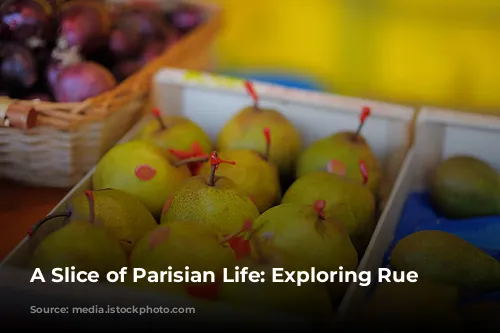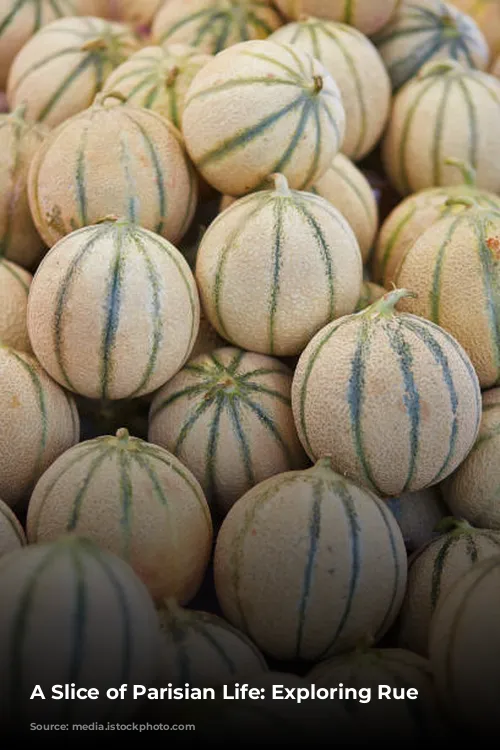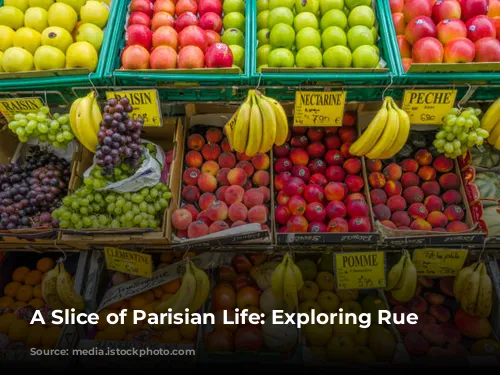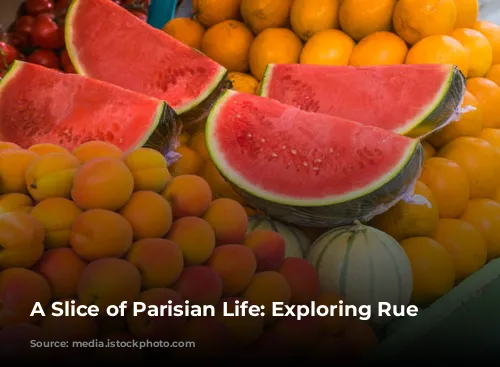In the heart of Paris, nestled in the shadow of the iconic Eiffel Tower, lies a charming street called Rue Cler. This little lane is a haven of Parisian life, overflowing with shops that spill onto the cobblestones, offering a delightful glimpse into the city’s village spirit. One of the most captivating experiences in Paris is indulging in a leisurely picnic, and Rue Cler is the perfect spot to gather all the ingredients.
My journey into the world of French cuisine began with a limited palate, accustomed to simple sandwiches and processed cheese. However, my time in Paris has dramatically broadened my appreciation for fine food, and the French art of living well.

The Parisian Shopping Ritual
Parisians, known for their discerning tastes, embark on a daily pilgrimage to their local shops, driven by a combination of practicality and tradition. With small kitchens and a preference for the freshest ingredients, daily shopping is a necessity. But beyond the practicalities, shopping is a social event. It’s an opportunity to engage in friendly banter with the butcher, admire photos of the florist’s latest grandchild, and enjoy a leisurely cup of coffee with neighbors. The French custom of double or triple cheek kisses for acquaintances and friends adds a warm, social touch to these daily encounters.
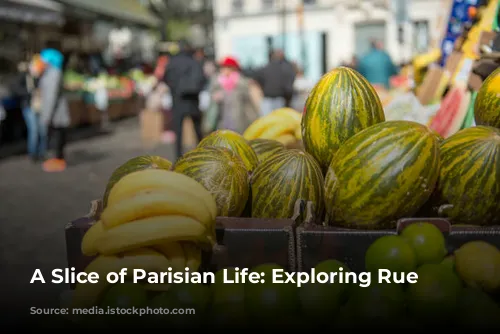
Freshness and Seasonal Delights
The produce shops on Rue Cler are a vibrant testament to the French love for fresh and seasonal ingredients. Every morning, trucks arrive laden with the bounty of local farmers, transporting produce with the speed and efficiency of FedEx. Parisians, known for their environmental consciousness, often carry small trolleys instead of using disposable bags. They also show a marked preference for unprocessed produce, opting for the freshest fruits and vegetables that are in season.
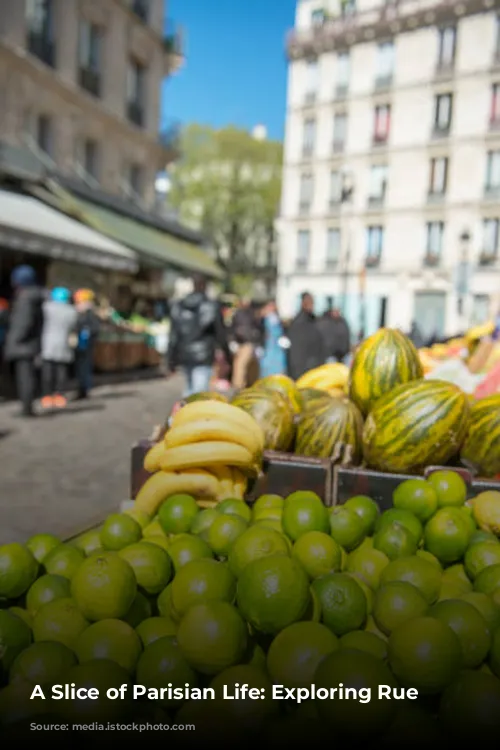
A Symphony of Scents
The senses come alive on Rue Cler, especially the sense of smell. Parisians, with their refined palates, meticulously inspect each piece of produce, sniffing the foreign strawberries and inhaling the rich aroma of the prized French gariguettes. The scent of fresh herbs fills the air, while the prices of melons are carefully examined, along with their country of origin, a legal requirement in France. For out-of-season melons, the French Caribbean serves as a source, though many Parisians prefer locally sourced produce.
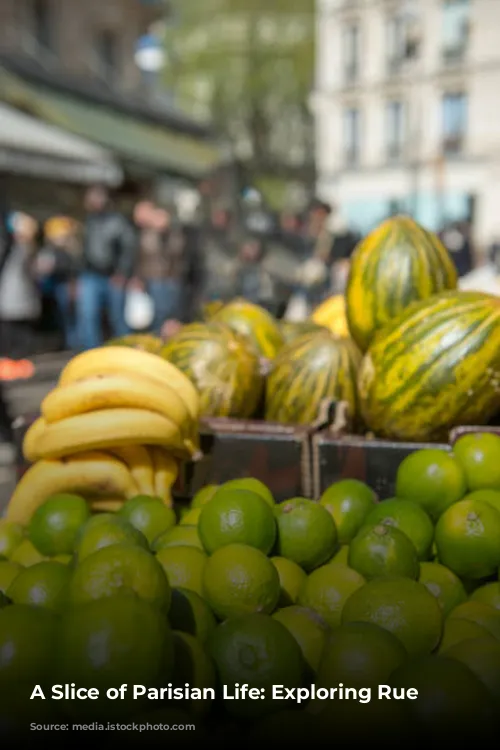
From the Sea to Your Plate
The fishmonger on Rue Cler offers the freshest catches, delivered daily from the English Channel, a mere 100 miles away. Given Paris’ status as a major commercial hub, the seafood here is often fresher than what you’d find in coastal towns. You can even spot a wiggle or two, a testament to the fish’s freshness.

A Feast for the Senses
Rue Cler’s most potent olfactory experience resides in the fromagerie, the cheese shop. A symphony of aromas greets you, emanating from wedges, cylinders, balls, and mini hockey pucks of cheese, all dusted with white, gray, and burnt marshmallow-like mold. “Ooh la la” is the standard exclamation of approval, and a true cheese enthusiast will exclaim “Ooh la la la la!” for extra emphasis. My Parisian friend Marie, on one visit, held a particularly pungent cheese to her nose, inhaled deeply, and declared, “Yes, this smells like zee feet of angels.”
Within this small shop, you can explore a staggering 400 varieties of French cheese. In the back room, enormous wheels of cheese, known as les meules, weighing a hefty 170 pounds each, are made from 250 gallons of milk. The hard cheeses are cut from these wheels, and the rind is typically not eaten, as these large wheels are transported by rolling them along the floor. However, the rind of smaller cheeses, such as brie and camembert, is considered an integral part of the flavor, as Marie puts it, “It completes the package.”
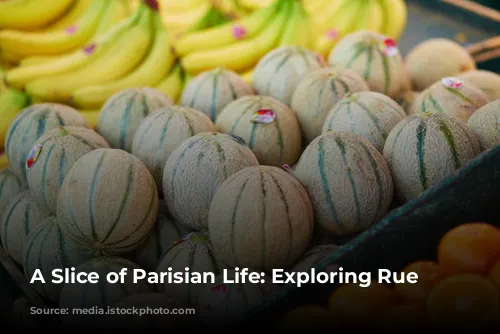
Gourmet Delights and Daily Fare
The charcuterie, also known as a traiteur, offers a tantalizing array of deli foods to go. These gourmet delis, prevalent in Paris, are a godsend for dinner party hosts. They can focus on preparing the main course while relying on the charcuterie for beautifully crafted side dishes, adding a touch of culinary sophistication to any meal.
At the boucherie, the butcher shop, Parisians are presented with a diverse selection of meats. Beyond beef, pork, and chicken, you’ll find an array of other options, including rabbit, quail, lamb, and duck. You may also encounter less common choices, like kidneys, liver, and even heart of beef. Horse meat has fallen out of favor, but calf’s head is still considered a delicacy, prized for its numerous tasty parts. A shopper hoisting a duck in the air is checking its feet for rough, calloused skin, a sign that the duck was raised on a farm and not confined to a factory setting. The availability of meats varies with the seasons, with game often hanging from the shop’s ceilings during winter.
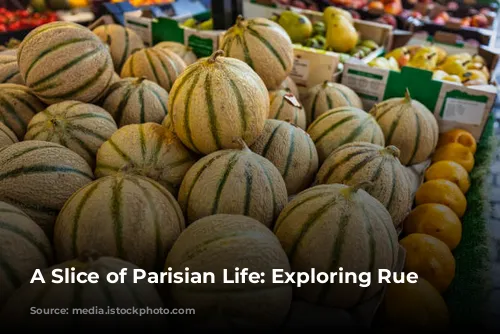
The Art of Bread and Pastry
Parisians take their bread very seriously, and the neighborhood boulangerie, or bakery, is the subject of much debate. At French culinary schools, aspiring bakers specialize in either bread or pastries. There is a widely held belief that a baker dedicated to making exceptional bread has little time for pastries, and vice versa. But on Rue Cler, the local boulangerie breaks this tradition, offering both delectable baguettes, perfect for sandwiches, and irresistible pastries for a delightful picnic treat.
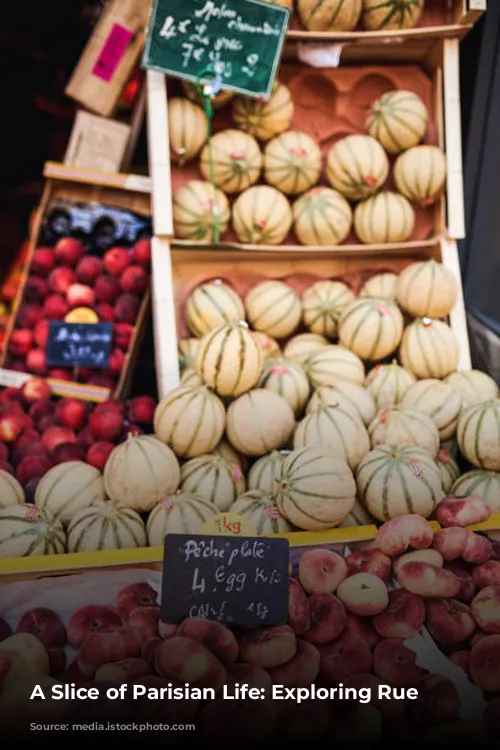
Completing the Parisian Table
A visit to the neighborhood wine shop is often the last stop for Parisian shoppers, allowing them to select the perfect wine to complement their carefully curated meal. For those unfamiliar with the nuances of wine selection, the shop’s knowledgeable staff is happy to offer guidance, taking into account your preferences, menu, and budget. Don’t be fooled by the low prices; France is known for its high-quality, affordable wines. You can easily find a delicious bottle for under $10, or a fine vintage for $10–15.
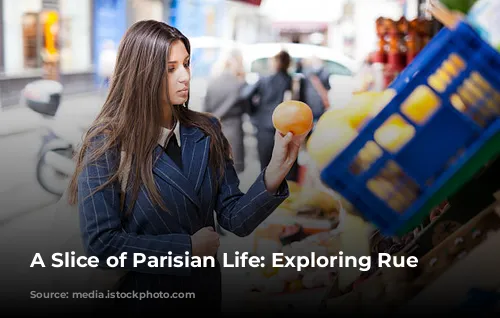
A Sensory Adventure Awaits
On your next trip to Paris, set aside some time to explore the neighborhood food shops on Rue Cler. This sensory adventure, filled with sights, smells, and tastes, is an experience you won’t soon forget. And remember, when visiting French shops, a simple “Bonjour, Madame” greeting and a “Merci” and “Au revoir” as you leave are considered good manners. Bon appétit!
